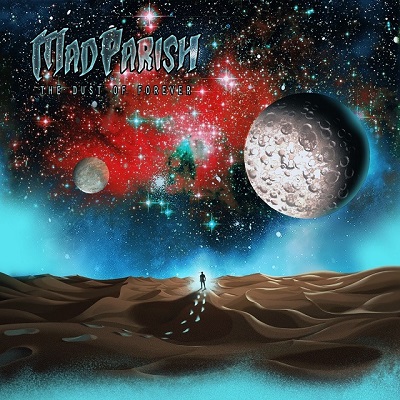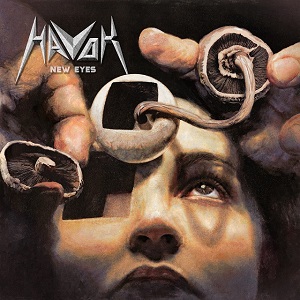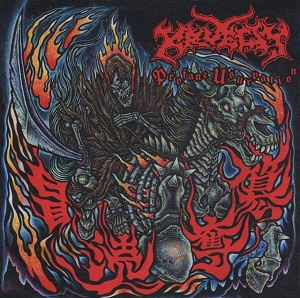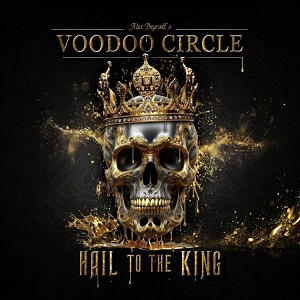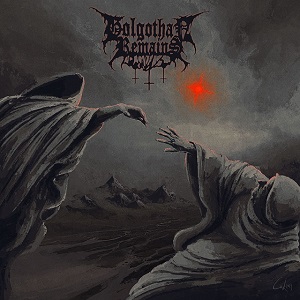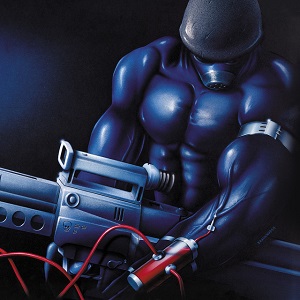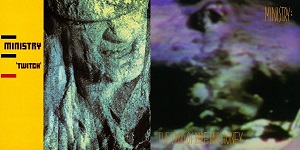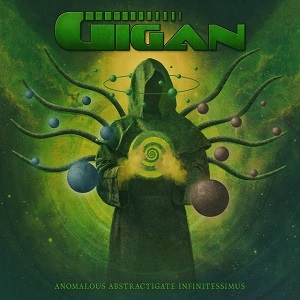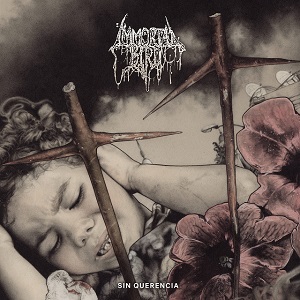ARCH/MATHEOS – “Throwing Flames From Its Aura”
September 23, 2011, 13 years ago
By Martin Popoff
For those pining for an aggressive maelstrom of an old school FATES WARNING album, a metal-munched dinner called Sympathetic Resonance, is served. As ANDERSON BRUFORD WAKEMAN HOWE is to YES, ARCH/MATHEOS is essentially another legitimate flavour of the mighty Fates Warning, and with JOHN ARCH at the vocal helm, it’s an enticing, intriguing chapter as well. Still, the ever gracious John (a kind and kindly woods-dwelling woodworker!) cautions me and y’all not to draw the parallel too, too boldly…
“Yes, there was,” begins Arch, asked if there was discussion about calling the band Fates Warning. “I felt really uncomfortable with it from the start, calling it a Fates Warning album. And I guess they entertained… you know, Jim (Matheos) entertained the idea, and Brian (Slagel – Metal Blade founder and faithful Fates supporter for 30 years!) actually liked the idea, but being that the entity of Fates Warning is under contractual obligation for InsideOut, there was obviously a conflict there. But that’s not the only reason. I felt that – and I’ve always felt through the years I guess – that I’m part of the history of Fates Warning, but I am not the full-time lead singer of Fates Warning – Ray (Alder) is, and Ray’s been with the band for so many years, and he has been touring with the band. He is the singer, so, you know, it seems like the answer to that, with communication the way it is today, it’s so easy for people to take a small bit of information and run with it and twist it, and just turn it into something that it’s not. So in the end, I was glad and happy. It would’ve been good if we came up with another name for the band/project, but we searched high and low, and nothing really hit us the way we wanted it to hit us. So it ended up being Arch/Matheos. And of course people are going to identify with the history of Fates Warning, the earlier stuff with JIM MATHEOS and myself, anyway.”
Asked as to the motivations to build such an epic and involved beast as Sympathetic Resonance, Arch figures that, “It was a good opportunity for me to offer something new. A Twist Of Fate, being an EP (2003; two tracks totaling 28 minutes), I always wished that was a full album, but we just didn’t have the time to work on things to make a full album. So this is a good opportunity to finally get a full album out after A Twist Of Fate. That’s me personally, and as far as Jim is concerned, I guess he had some music that he had for Fates Warning, and for certain reasons that I’m not at liberty to say, it just didn’t come together right at the time for Ray and Jim, and so the music was available for me to listen to, and after hearing the music, it sounded like it was pretty progressive and right up my alley (laughs).”
“The lyrics take a turn away from the mythological concept of the earlier Fates Warning stuff, Awaken The Guardian etc.,” continues John, who has frankly put together a gorgeous canon of impassioned poetry to accompany Jim’s taut and dramatic riffs and solo excursions. “They’re more in line with A Twist Of Fate. You asked me earlier about how this came about, and in conjunction with that, I’m glad it came about, because it seems like it was a good time in my life to get into this music and to keep my mind busy. What I’m trying to say is that the lyrical content is definitely more personal. Personal. Something that is based on real-life experience. Life seems to sneak up on you and have some twists and turns and things that are unexpected, which you never realized and you get blindsided with. And that has a lot to do with what the lyrics are about on this album. So it’s more in line with A Twist Of Fate and maybe even an extension of A Twist Of Fate. So this was a great opportunity. The music itself that Jim had written, again, it’s progressive, but there’s a lot of changes, and there’s a lot of really melodic stuff going on, so you know what? It really inspired me to dig deep. The lyrical content was therapeutic for me, and I kind of think it really does fit the music and has a definite message that is open to interpretation. Still, it felt very personal and I felt passionate about singing it.”Look for lots of Arch as fully ensconced in his celebrated singing style, stretching and striving across riffs and time signatures, a master of the art of vocal phrasing, much like… well, actually, Phil Lynott a generation before his.
“That’s a tough one,” muses John, asked to search his mind as to where he might have picked up this fortunate foible. “I don’t know, I don’t remember or recall. Maybe BRUCE DICKINSON, I think, but not even him. I think that’s just something I developed. I had my hand in playing drums, particularly when I was younger, and also guitar, and singing vocals while I was playing guitar. Plus my sister had classical… I had her classical music, as my sister is a concert pianist. I heard that going on while I was growing up (laughs). It doesn’t make sense, but anyway, it’s part of being a perfectionist. It seems like I’m never happy until I squeeze every little thing I can into it, and even with the melody lines, I have to make them as complex as possible. I don’t know where that came from, but I think it’s just part of my makeup and my personality.”Further adding to the vibe of Sympathetic Resonance is the happy happenstance that for the most part, the record consists of rockers working together in the flesh, rather than swapping files far aflung and back and forth.
“Yes, well as far as Jim and I, it was very hands-on,” explains John. “I was in Connecticut and Jim was in New Hampshire, and so from the onset of this project, I went up to Jim’s place. He called me and said, ‘You know, if you have the time and you feel like you want to listen to some music, I can show you something you might want to do something with.’ So I went to New Hampshire and I listened to what he had at that time. I think he had two or three, maybe three songs, he had written at that time, which were pretty well arranged the way he wanted them. And I was to take them home, study them, and listen to them over and over and over again, and I knew from then, I thought it was something I could work with. And so that’s how we worked. Every weekend I would drive up to his house, and after I got the first couple of songs, we started the demo process. And as I was writing, I would present what I would come up with to him. The first song, was very lengthy, ‘Neurotically Wired’, and it took some time to digest and understand all these weird time signatures that were going on. I’ve been out of it for long time, so it took me awhile before I felt I could concentrate on what I needed to do, and of course going up there, doing the demos, I was getting my voice in some respectable shape as well. Jim and I were very hands-on. I was up there every weekend doing something, getting the demos done and then doing the actual recordings, which were done at Jim’s. Then we took the files and went to The Carriage House, where Bobby (Jarzombek) came in and put his drums down. Frank (Aresti) did go up to Jim’s and worked with him on his leads, one on one, so really, JOEY VERA is the only one who stayed in California, and put his bass tracks down there.”
And, finally, what perchance did, and does, this title, Sympathetic Resonance, mean to the penner of the literary side of the record?
“Sympathetic Resonance… I think I found that haphazardly, just kind of looking through words and definitions, and I really liked the way the words sound; they have a nice rhythm to them. But by definition, Sympathetic Resonance, let me see if I can get this right. Of course, it’s a musical term, with a formerly passive instrument resonating with the striking of another instrument. And I took that one bit further, one step further, so that there’s a human element to it. It’s multifaceted; the messages I’m trying to convey with the lyrics… that’s just one aspect of it. I hope that people, the fans, read the lyrics and figure out what they mean to them. I want to see how it resonates to them, and how they interpret the lyrics. I listened to the music Jim had written and I was inspired by what Jim came up with, and it resonated with me, and I took the music and wrote the melody lines and lyrics. So I think it has a lot of connotations there. The human element… everything that I wrote about, has a real true, human tone to it, and I really believe that anyone that is alive and vibrant can feel these things and has had these experiences and can relate to what I say.”“I’d say that the album cover represents the title, Sympathetic Resonance, as well,” reflects Arch, after a brief re-telling of the well-known story concerning the ritual burning of the band’s first album cover, Night On Brocken, so many years and beers ago. “The image of this figure, this shape… it’s just burning and throwing flames from its aura. I look at it as a resonance; it’s resonating… we resonate so many things. We resonate anger, all kinds of emotions, fear, and I just think it’s a good representation of what we’re trying to say here. We searched high and low for images, and we were actually working with another artist that was sending us images and we just weren’t happy. But when we saw this guy’s work, it was really cool, because there’s no trick photography here. It’s all done with a camera and exposure time. It was such a cool concept. And yeah, I like that type of artistry in an album cover. And as I say, I feel it really does represent Sympathetic Resonance and what we’re trying to say.”


